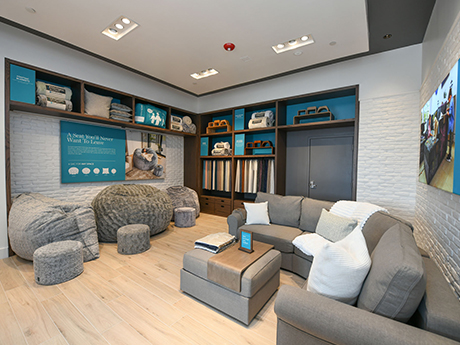Central Florida retail is alive, well and growing, thanks in large part to Florida’s continuing resilience to the nation’s economic challenges. Thousands of people are moving to the state each week, the Orlando area’s economy continues to diversify beyond tourism and residents continue to show confidence with their retail spending.
That said, there are significant challenges facing new retail developments, due to the cost of construction and other inflationary pressures. We expect this to be a major issue for the rest of this year, and it will require thoughtful planning for everyone involved in these projects.

As we look at the remainder of 2023, we see two big takeaways:
• For brick-and-mortar retail, it’s important for developers and owners to bring in concepts that are new and fresh. In some cases, this involves established retailers getting creative with their spaces, like what Macy’s is doing with its new Market by Macy’s concept, which uses a smaller footprint than traditional Macy’s stores.
• To make new retail developments happen, developers, landlords and tenants need to be inventive in how they structure deals, whether it’s sharing in construction cost overages or giving tenants more time to get their spaces ready.
With that backdrop, here are six trends to watch this year in Central Florida retail:
1.) Experiential concepts are the hottest thing in town.
Combining retail with activities is all the rage, whether it’s pickleball, Topgolf or Popstroke. Another fresh concept that is coming to town promises to take this concept beyond sports: an immersive art experience from a company called Meow Wolf.

These users are looking for larger land tracts of at least 2.5 acres, or vacant anchor space that’s anywhere from 35,000 to 70,000 square feet. Developers and owners used to only focus on Central Florida’s prime tourist areas for these types of projects, but now are expanding out to residential areas like Lake Mary and Waterford Lakes.
2.) Retail landlords continue to have the power.
There continues to be a lack of quality retail space in the market. Most successful centers are fully leased, and when space comes available it’s quickly preleased off-market.
With this in mind, it’s important for brokers and retailers to have a finger on the pulse if they are looking for space, and to work with their brokers to communicate with landlords. Also, it’s important to note that properties in favorable locations are getting the rental rates they are asking, while offering appropriate tenant improvement dollars.
3.) Construction costs are causing major headaches for retail developers.
Costs continue to be challenging. Landlords and developers often need to command lease rates from the mid-$40s to mid-$50s per square foot to deliver space, and even with that, it’s usually bare space.
To make deals work, developers need to tell clients real delivery times, which can be challenging given that builders are often are waiting for key components. It’s also smart for a developer or owner to give a retailer 270 days to get a facility open instead of the traditional 120 days, and for landlords and tenants to share the cost of construction overages.
4.) Mixed-use projects are sprouting up all around the area.
These projects are changing the face of Orlando and surrounding areas. New developments with hotel and multifamily such as Wyld Oaks in Kelly Park are sprouting up in areas like east Orlando and Apopka, where land is still available.
Closer to town, a number of major redevelopments are taking shape. The Packing District, on the site of one of Dr. Phillips’ former citrus production plants, is planned to include a regional park, 3,500 residential units and more than 1 million square feet of retail and office space.
And the Rosemont District is becoming the RoseArts District, a mixed-use development with plans for 5,650 residential units and 350,000 square feet of commercial space.
5.) Giant fitness centers are continuing to move into the area.
Large fitness facilities like Upscale Lifetime Fitness, which is entering the Winter Park market, are changing the game in this industry. Many fitness users now expect spaces that are larger than 100,000 square feet and include features such as Pilates studios, gyms and swimming pools.
6.) New-to-market restaurants are starting to make Orlando more of a “foodie” spot.
New concepts to the area like Tom’s Watch Bar, Bar Italia and Kabooki Sushi fit the mold of what’s popular: chef-driven concepts that are not part of major national chains.
Central Florida residents are showing they want unique restaurant experiences, like Chayote, a new contemporary Caribbean restaurant created by renowned chef Alfredo Ayala in Puerto Rico that’s being brought to Winter Park.
To sum up, there are plenty of reasons to be optimistic about Central Florida retail. After all, the area has the world’s largest anchor tenant, Disney World.
We continue to see multiple letters of intent for any favorable retail space. Quality brands continue to come to town, and many existing retailers are expanding. Certainly, new development will continue to be challenging, but we are seeing that smart developers are making it work by being creative in their deals with buyers and tenants.
— By Alexie Fonseca, Senior Vice President, and Jorge Rodriguez, Executive Vice President, Colliers. This article was originally published in the June 2023 issue of Southeast Real Estate Business.


